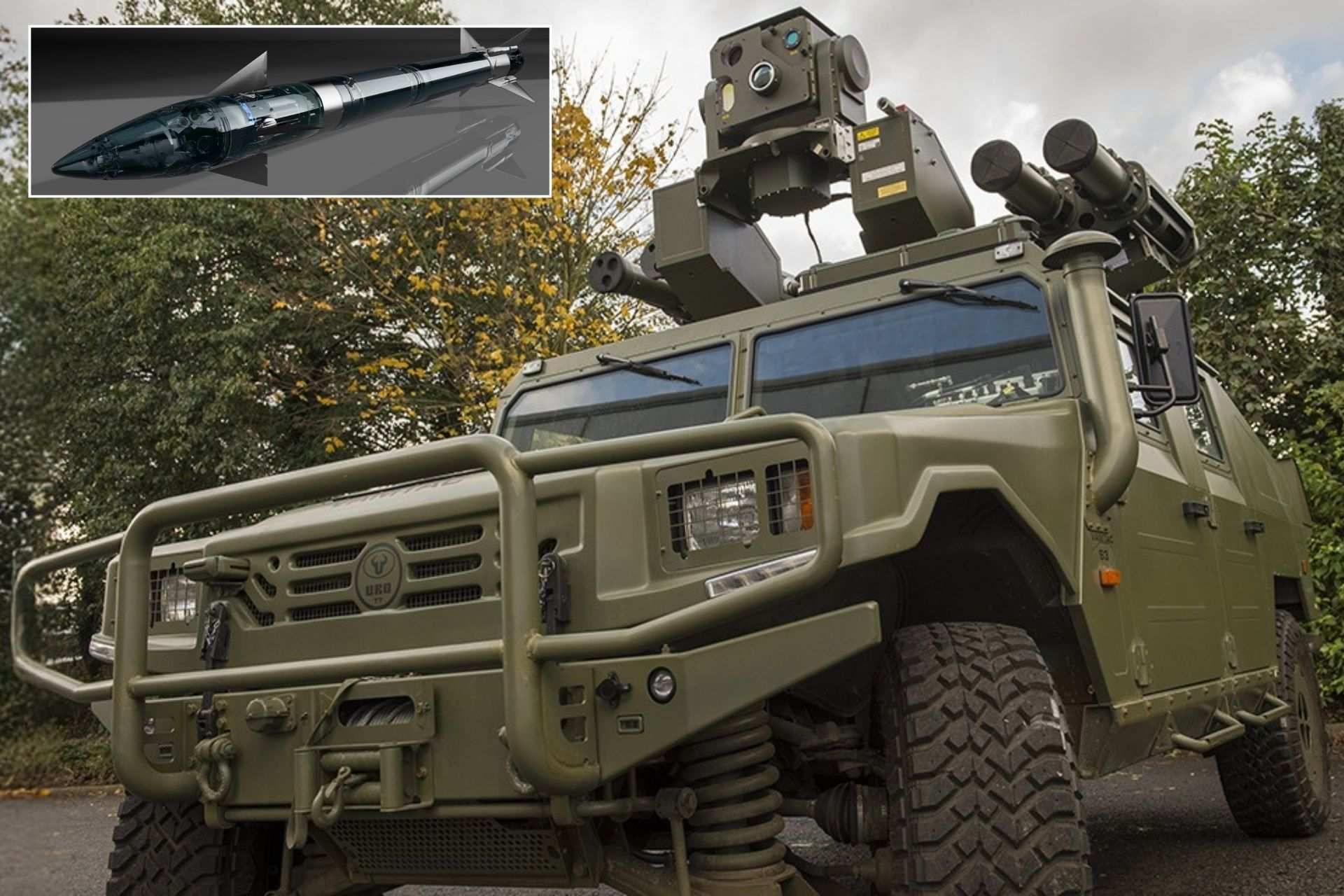Breaking News
Thales UK Demonstrates Versatility of Its Lightweight Multi-role Missile LMM Against Simultaneous Targets.
On January 9, 2025, Thales UK, in collaboration with the British Ministry of Defence (MoD), conducted a demonstration at the Manorbier test site to showcase the advanced capabilities of its Lightweight Multi-role Missile (LMM). The event, attended by international defense partners, highlighted the missile's adaptability and precision in scenarios combining air defense and surface attack. Known as Martlet in its naval configuration, the LMM was demonstrated in operational contexts designed to address contemporary threats.

With an operational range exceeding six kilometers and a speed of Mach 1.5, the missile is capable of engaging challenging and mobile targets, such as stealth drones, fast-moving boats, and armored vehicles. (Picture source: Thales)
During the event, Thales conducted consecutive firings of the LMM at two distinct targets: a Banshee unmanned aerial vehicle (UAV) and a fast inshore attack craft (FIAC). The two missiles, launched within 60 seconds, successfully hit their respective targets with notable accuracy. This demonstrated the system's ability to address diverse threats in operational scenarios requiring quick response and adaptable weapon systems.
The LMM is designed to meet the demands of modern land, sea, and air environments. It employs a "beam riding" laser guidance system, which uses a laser beam projected by the control system to guide the missile to its target. This system is resistant to electronic countermeasures and ensures precise engagement with minimal collateral damage, making it suitable for sensitive or urban operations. With an operational range exceeding six kilometers and a speed of Mach 1.5, the missile is capable of engaging challenging and mobile targets, such as stealth drones, fast-moving boats, and armored vehicles.
Equipped with a multifunctional warhead, the LMM combines explosive and fragmentation effects to neutralize a range of threats. Its two-stage propulsion system allows for recoil-free launches, making it compatible with lightweight platforms such as all-terrain vehicles, naval systems, and helicopters. These characteristics make the missile effective in maritime environments, rugged terrains, and operations requiring high mobility.
The LMM can be deployed across various platforms. In maritime applications, it has been successfully integrated with hybrid systems combining missiles and naval guns, providing effective defense against swarm attacks and low-signature targets. During trials, the missile demonstrated its ability to neutralize FIACs at ranges of up to six kilometers, even in challenging sea conditions. In aerial configurations, it is deployed on Wildcat helicopters, which can carry up to 20 missiles, enhancing their capabilities for close-range protection and air defense. On land, it is integrated into mobile systems such as RAPIDRanger, enabling rapid and efficient deployments.
However, employing the LMM presents operational challenges. Its advanced technology requires specialized operator training and robust logistical support to ensure the availability of appropriate launch platforms. Additionally, complex environments, such as urban areas with dense structures or rough seas, can complicate target acquisition despite the missile’s guidance system. Potential interference from electronic warfare or laser-based countermeasures may also affect its performance, necessitating contingency measures.
Despite these challenges, the LMM remains a key asset for modern armed forces. Its precision, ability to minimize collateral damage, and adaptability across diverse platforms make it a strategic solution for addressing current threats. The Manorbier demonstration not only underscored its capabilities but also highlighted its potential to enhance defensive operations in varied and complex operational environments.
The LMM represents a technological response to the needs of contemporary conflicts. Its adaptability, combined with strategic planning and tailored logistics, allows for its effective use in operational theaters while addressing evolving threats. However, maximizing its impact on the battlefield requires proactive management of its inherent constraints.


























